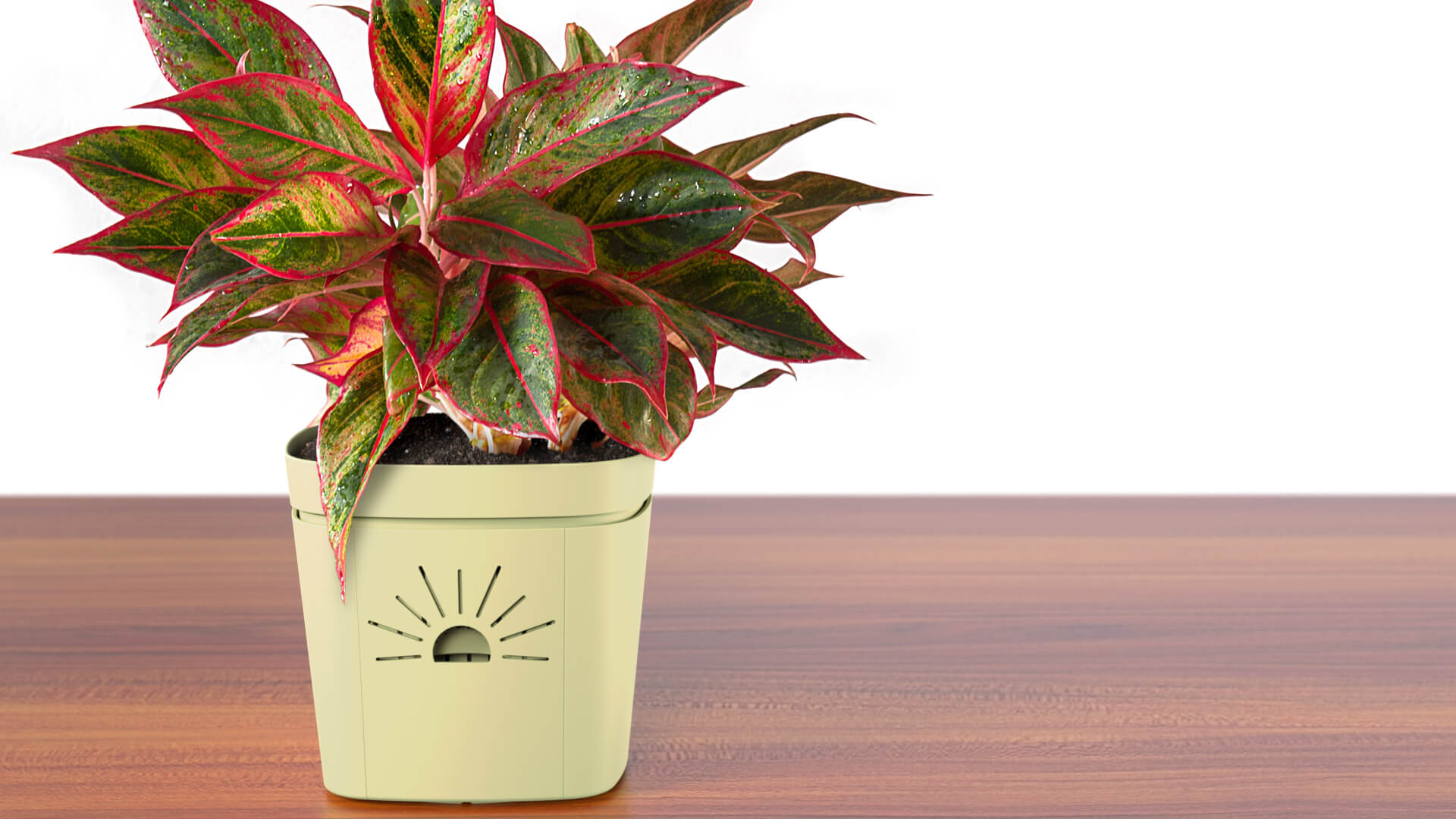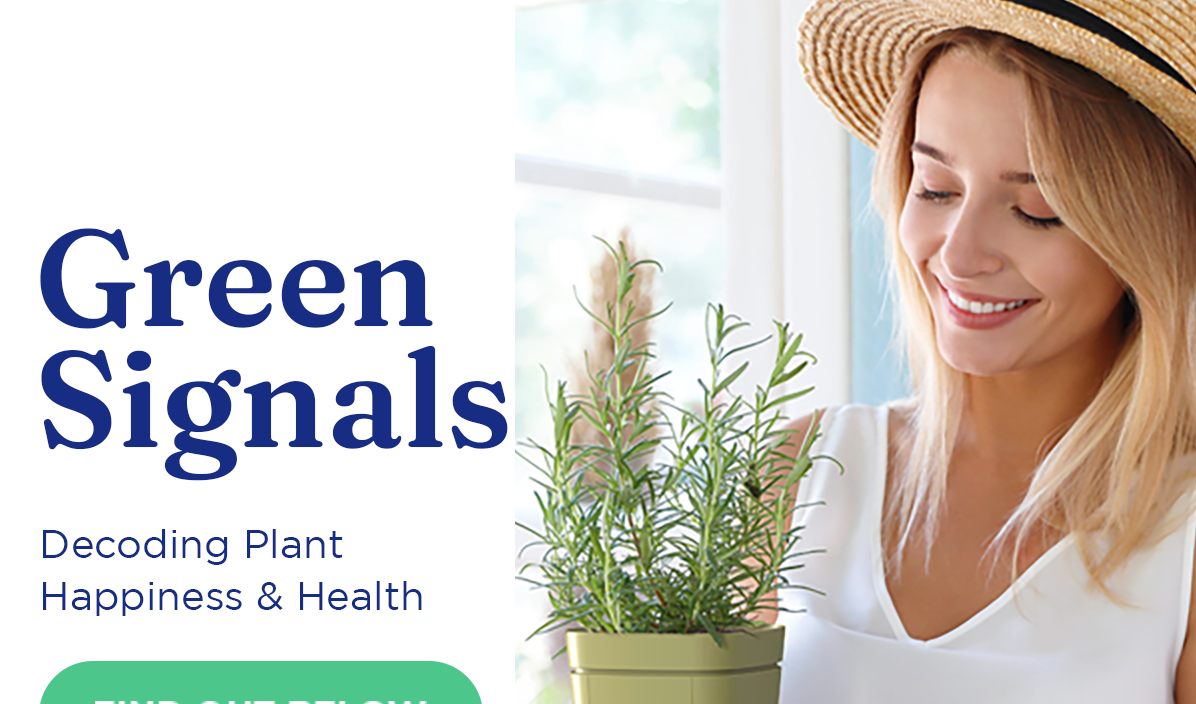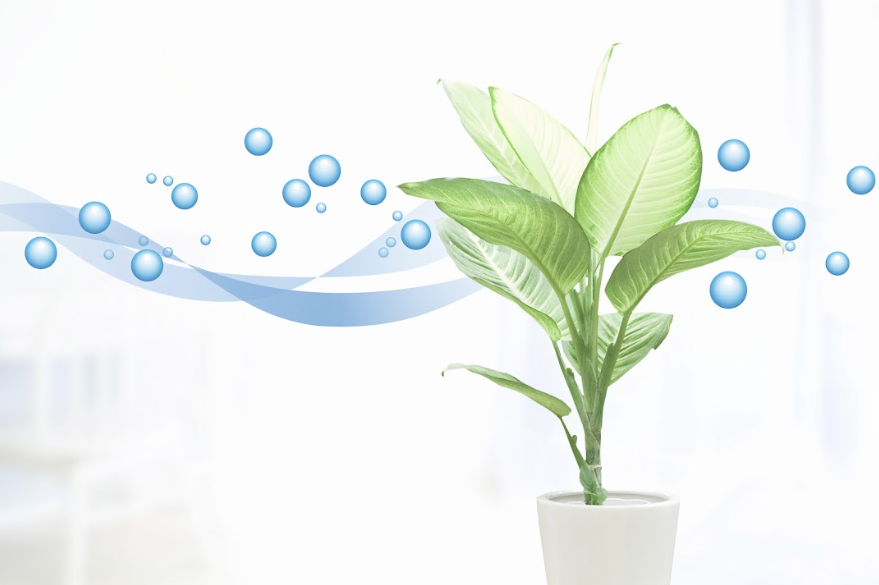Origins
The Alocasia or Elephant Ear Plant is a species of flowering plant from the family Araceae, native to tropical and subtropical Asia and Australia. Some believe it originated in India, although it has spread across many parts of Southeast Asia over the years. It has been in cultivation for over 28,000 years.
The first recorded use of this plant was by Alexander the Great, who used its leaves as plates for eating food during his travels through India. Today, people prize Alocasia plants for their striking leaves, which have a unique shape and appearance. They can range in size from small houseplants to large garden specimens that make extraordinary focal points! When properly cared for, these lovely plants can provide vibrant color year-round. Perfect for adding a touch of exotic beauty indoors or out!
Light
Requirements
Alocasia requires low to medium levels of indirect sunlight. Place them in a spot that receives bright but indirect light throughout the day. Direct sunlight can damage Alocasia leaves and cause them to become dry or scorched. To ensure optimal health and growth for your Alocasia, keep them out of direct sunlight.
When selecting an ideal location for your plant, ensure sufficient space between windows or other light sources to avoid overexposure. Additionally, consider using sheer curtains or blinds to protect your Alocasia from getting too much sun. Rotating the pot every few weeks is also beneficial so that all sides get equal exposure and prevent any lopsided growth patterns from occurring due to uneven lighting conditions.
Genus Summary
| GENUS | Alocasia |
| COMMON NAMES | Elephant ears |
| LIGHT | Low to Medium Indirect Light |
| WATER SCHEDULE | 14 days |
| WATER REQUIREMENTS | Keep the soil evenly moist but not soggy. |
| HUMIDITY | High |
| TEMPERATURE | 65-85°F |
| FEEDING | 1x month |
| TOXICITY | Toxic to humans and animals |
| PESTS | Mealybugs, spider mites, scale, aphids |
| DISEASES | Root rot, leaf spot, mildew |
| POT | Maximum root aeration |
| SOIL | Loose, nutrient-rich soil |
| FERTILIZER | Infrequently |
| IN WATER OR BY DIVISION | Stem cuttings. |
| NOT NECESSARY | Prune the stems when they become long and leggy in order to keep the plant bushy. |
| SIZE | 8 to 72 inches indoors |
Water Requirements
Alocasias growing in a Naked Root planter can be on a 14-day watering schedule.
Alocasias are vulnerable to root rot and fungal diseases, so proper drainage and aeration are necessary. Yellowing leaves and leaf spots are signs of over-watering. Alocasias go dormant in the winter and need very little water if any.
The rhizomes of Alocasia plants hold moisture, but they can quickly become rotten if left in too much water. To keep them healthy, provide root zone air circulation similar to what they would get in their natural environment.
Humidity
Alocasias require high humidity to thrive. To increase the humidity, you can use a humidifier, group plants together, or put them on top of a pebble tray. Keep the plant away from any heaters, air conditioners, or drafts.
Do not mist Alocasia plants, as this increases the likelihood of fungal disease. Fungal infections are already common in Alocasia, so take extra care to ensure humidity levels remain high but avoid any instances of standing water in the soil or on the foliage.
Lastly, wipe the leaves off when dusty to ensure their photosynthesis process is unhindered.
Temperature
Alocasias prefer a nice cozy 65-85° Fahrenheit. This is the average temperature inside most people’s houses, so they are perfectly happy living where you are. If exposed to temperatures lower than 60°F for too long they will start to dramatically drop leaves.
Toxicity
Alocasias are hazardous for humans and animals. The leaves of this plant contain oxalate crystals that can cause swelling and irritation of the mouth if ingested and, in extreme cases, make it difficult to breathe. Prevent children and pets from coming in contact with the plant, especially with their mouths. Wear work gloves when handling the plant, as some varieties contain toxins that can irritate the skin.
Although Alocasia plant species are toxic to humans and animals, the root tubers and stems from some varieties (such as the Coarse Root Alocasia or Indian Alocasia) are eaten in India, the Philippines, and Vietnam.
Pests and Diseases
Alocasia plants can encounter several insects and illnesses. In households, these plants are generally troubled by mealybugs, spider mites, scale, and aphids. You can manage these with regular treatments of insecticidal soap or horticultural oil.
Alocasia plants can be vulnerable to certain fungal illnesses, such as root rot, leaf spot, and powdery mildew. These can be managed by using fungicidal sprays or by enhancing the conditions in which they are grown. It is essential to provide the correct water levels to avoid stressing the plants, which can cause them to become susceptible to fungal diseases.
Before introducing new Alocasia plants to your collection:
- Scrutinize them and remove any dead or unhealthy leaves.
- Wash off any insects that you may see.
- Isolate the new plants for a few weeks before putting them in with your existing collection, and monitor the plant and soil during that time.
Pot
Alocasias are beautiful and exotic plants that require special care to maintain a healthy root system. Due to their thick underground tubers, Alocasia is susceptible to root rot if the roots don’t have adequate air exchange. To avoid this risk, use a planter that mimics how these plants grow in nature – one that maximizes airflow around the roots.
A pro tip for keeping your Alocasia plant happy and healthy is repotting them sparingly. They actually prefer being slightly root-bound!
Soil
Alocasia plants will thrive when planted in loose, nutrient-rich soil. The potting mix should be able to hold moisture for the plant’s needs but also have enough drainage that the roots do not become soggy or rotten.
Most commercially available pre-mixed soils are suitable for Alocasia if they contain organic matter like peat moss or coco-coir but do not contain any moisture-retaining crystals. Make sure to use light enough soil to allow adequate air circulation around the root system of your alocasia plant while providing it with the necessary nutrients and moisture needed for healthy growth.
Fertilizer
When caring for Alocasia plants, it’s important to remember that they are not heavy feeders. During the growing season (usually spring and summer in temperate climates), you should provide them with a general houseplant fertilizer once per month.
Depending on your soil composition, you may need to adjust the fertilizer or opt for a more diluted solution. Additionally, during periods when growth is slower (typically fall and winter), it’s best to reduce feeding frequency or skip fertilizing altogether. If you need more clarification about how much and how often your Alocasia needs feeding, it is better to err on the side of too little food rather than too much.
Propagation
Alocasia can be easily propagated in water if you trim a piece of stem containing a node.
You can also propagate Alocacias through division. Alocasias have a rhizomatous root system. To propagate, separate a section of the root and place it in the soil. With the right conditions and enough time, a new plant will grow from the rhizome.
Pruning
Trimming an alocasia plant is unnecessary unless it has dead or damaged leaves. After winter, if you notice wilted or faded foliage, you can use a sharp pair of pruners to cut the whole stem as close to the bottom as possible.
10 Striking Varieties and Cultivars
- Alocasia amazonica ‘Polly’. This variety is readily available in garden centers. It is commonly labeled as an African Mask plant. They are known for thin dark green leaves with deep white veins and scalloped edges. Each leaf can be as much as 16 inches long. The plant usually grows 24 inches tall indoors.
- Alocasia amazonica ‘Ivory Coast’. This cultivar has arrow-shaped leaves with white veins. The stems are pink! It is a fast-growing cultivar that quickly reaches 4 feet tall.
- Alocasia reginula ‘Black Velvet’. This variety is also called Little Queen. It has very dark green (nearly black) leaves with silver veins. The leaves are heart-shaped and have a velvety texture. It grows to a bushy 12 inches tall.
- Alocasia rugosa “Melo’. This shrubby and short cultivar grows to 24 inches tall and nearly the same width. It has thick, velvety leaves with deep ridges in an intricate pattern of jade and blue-green.
- Alocasia baginda ‘Dragon Scale’. This beauty is famous for its bright green leaves with dark green veins. The leaves are bigger than dinner plates (12-16 inches), and the plant grows 3 feet indoors. If grown outside, it can easily reach 6 feet tall.
- Alocasia zebrina ‘Reticulata’. This cultivar has zebra patterned striping in green and lime, with dark green veins. The patterns can be intricate and look similar to a spider’s web. The leaves are slender and arrow-shaped, with a fine point. This one gets 3 feet tall and wide indoors.
- Alocasia cuprea ‘Red Secret’. The striking burgundy foliage of this cultivar looks amazing against golden veins. The heart-shaped leaves start pink and darken over time. This variety is 3 feet tall with 18-inch long leaves.
- Alocasia macrorrhizos ‘Giant Taro’. Not to be confused with edible taro, this cultivar makes an impressive 6-foot-tall houseplant. This Alocasia is a great choice if you find large indoor palms too finicky. The enormous shiny green leaves have ruffled edges and lime-green stalks.
- Alocasia lauterbachiana ‘Purple Sword’. This variety grows 4 feet tall and has long, narrow leaves. Each leaf can be up to 2 feet long but only a couple of inches wide. The leaves are glossy green on top and purple underneath. The green leaves contrast nicely with the dark plum stems.
- Alocacis nebula ‘Imperialis’. This variety has thick (17-inch long) leathery leaves of blue-green. The underside of each leaf is a deep burgundy-red, and the veins are dark blue-black. Altogether, this 3-foot-tall Alocasia is stunning!
Summary of Alocasia Plant Care
Alocasia is a tropical plant that thrives in low to medium indirect light. It loves humidity but despises soggy roots. It is not a heavy feeder and does not need pruning. To mimic their natural environment, place them in an east window, provide humidity, and a pot with maximum root zone aeration.


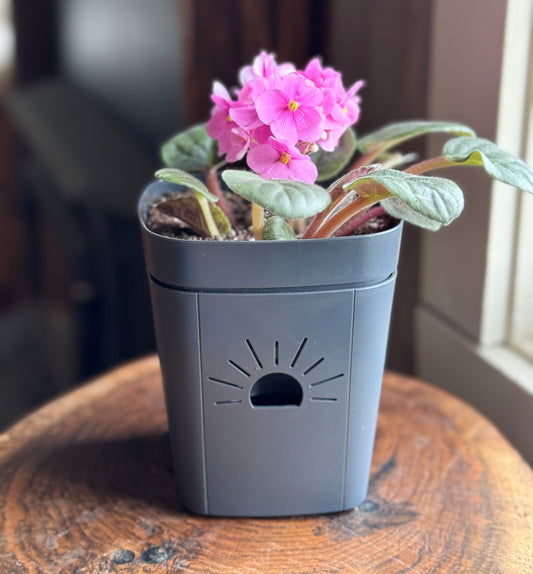
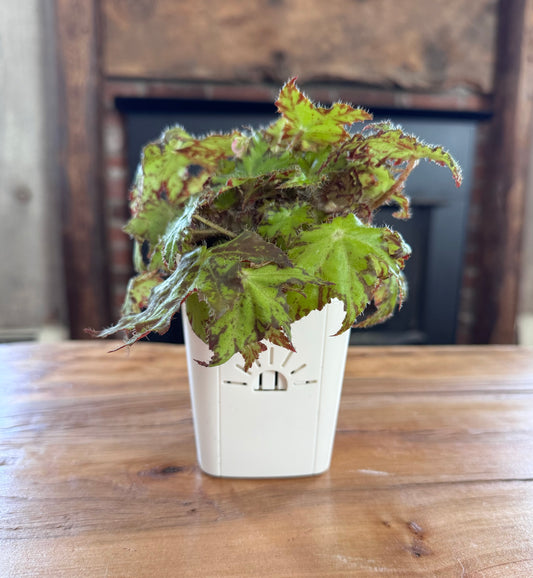

 Verified Buyer
Verified Buyer





